
10 Amazing Facts of Egyptian Gods
Table of Contents
In Ancient Egypt, The pantheon of Gods
- The worship of various gods and goddesses was essential to daily life. So, it’s not a big surprise that there were more than 2,000 gods in Egypt. Some of these gods’ names are well known, like Ra, Isis, Osiris, Horus, Amun, Hathor, Bastet, Thoth, Anubis, and Ptah, some of the gods worshipped in ancient Egypt.
However, the names of many of the others are less well-known.
- Some of the more well-known Egyptian Gods became state gods, while others were linked to a certain place or, in some cases, a role or ritual.
For example, the goddess Qebhet was a lesser-known god who gave cool water to the souls of the dead while they waited to be judged in the afterlife.
- The Egyptian goddess Seshat was revered as the patron of scribes and accurate measurement. But she was overshadowed by Thoth, better known as the God of writing and patron of scribes.
Ancient Egyptian culture grew from the people’s knowledge of these Egyptian gods and their significant impact on everyone’s lives worldwide.
- Egypt’s many gods were at the centre of the country’s religious rites and personal religious practices. They were also used in the big funeral ceremonies and the Egyptian belief that the dead would always be happy after death.
- The way people thought about gods changed from being based on animals to being based on people and filled with magic.
Magic and healing were both overseen by Heka; God was also the first force which existed before all the other gods, made creation possible, and kept human and divine life going. Ma’at, which means harmony and balance, was the most important thing in Egyptian culture.
It was represented by the Egyptian goddess with a white ostrich feather, and she has the same name, and Heka gave power to Ma’at and all the other gods.
Heka was the physical form of Heka, which should be thought of as natural laws that we would think of as supernatural today, but to the Egyptians, they were just the way the world and the universe worked.
The Egyptian Gods gave people all good things, but Heka made that possible.
For example, Hathor was a goddess of music, dancing, and inebriation; however, she was also understood to be an ancient Mother Goddess. And she was known as a destroyer in an earlier incarnation when she was known as Sekhmet.
- The goddess Neith was originally a goddess of war; however, she evolved into the archetype of the Mother Goddess, a figure associated with nurturing and caregiving, to whom the gods would turn to settle their disagreements. Many gods and goddesses of ancient Egypt, such as Set and Serket, morphed throughout history to take on new functions and responsibilities.
- These transitions were sometimes dramatic, such as in the case of Set, who went from being a hero protector-god to becoming a villain and the first person to commit murder in the annals of human history. Serket was likely an ancient Mother Goddess. as evidenced by her later roles as a guardian of women and children and a protector against venomous creatures (especially scorpions).
Her name means “she who brings forth life” in Egyptian. Her name means “protector of the womb” in Egyptian.
- The Egyptians did not see a problem with having many Egyptian gods, and they did not frequently abandon their older religions in favour of adopting new ones. Syncretism combines the characteristics and roles of multiple gods to reconcile conflicting religious beliefs, customs, or ideals for political and religious reasons. Amun was considered to be the most powerful deity in the New Kingdom.
The worship of Egypt’s gods developed over time as large cults first emerged on a regional scale and later spread to the entire country.
Some of the Egyptian Gods
The Ogdoad
The eight Egyptian gods represent the fundamental aspects of creation: Nu and Naunet, representing water; Heh and Hauhet, representing infinity; Kek and Kauket, representing darkness; Amun and Amaunet, representing light (hiddenness, obscurity). The various ogdoads of Egyptian gods, who are known as the spirits of place, served as a shining example of the concept of equilibrium, which played such an important role in Egyptian.
A’ah
He was an early moon Egyptian god who became Iah (also called Yah) and then, in the end, Khonsu.
Aken was in charge of the boat that took dead people across Lily Lake to the Field of Reeds. He slept until Hraf-Hef, the grumpy Divine Ferryman, asked for him. Only the Book of the Dead has his name in it.
Aker
The Egyptian God who watches over the eastern and western edges of the afterlife. He watched over Ra’s sun barge as it went into and out of the underworld at night and morning.
Am-Heh
He was a Egyptian god in the underworld who lived in a sea of flaming torment and was called the “devourer of millions” and “eater of eternity.”
Amenet (Amentet)
She was a goddess who fed and drank with the dead after they died. Amenet was the wife of the Divine Ferryman. She was known as the “She of the West.” Near the entrance to the underworld, she lived in a tree. The girl was born to Hathor and Horus.
Ammit (Ammut)
A goddess with the head of a crocodile, a leopard’s torso, and a hippo’s back legs. Her name means “Devourer of Souls.” In the afterlife, She waited for her day in court as she sat before the balances of truth in the Hall of Truth. And ate the hearts of the souls that Osiris had not saved.
Amun (Amun-Ra)
He was the sun god and the God of the air. And Khonsu. Sometimes, he was the king of all Egyptian Gods, even though he started as a minor fertility deity. During the New Kingdom era, he was seen as Egypt’s most powerful God, and his worship was getting close to being a one-god religion. At this time, people even thought that other gods were just different parts of Amun. His priesthood held the highest rank in Egypt, and God Amun’s wife’s role was considered sacred, which was given to royal women and almost as important as the pharaoh.
Son of Hapu, Amunhotep (Amenhotep)
He was a god of healing and wisdom. Along with Hardedef and Imhotep, he was one of the few people the Egyptians turned into gods. He was Amunhotep III’s royal architect (1386-1353 BCE). People thought he was so wise that he became a god after he died. He had a big temple in the western part of Thebes and a place to heal people in Deir el-Bahri.
Anat
She was the goddess of birth, love, war, and sexuality. She came from either Syria or Canaan. In some texts, She is called “the Mother of the Egyptian Gods” sometimes. in some accounts, In some stories, she is a virgin, but in others, she is the most beautiful and sensual goddess in the universe. The Contendings of Horus and Set were adapted into several different versions. The goddess Neith suggests that Set should marry her. She is often compared to the Greek goddess Aphrodite, the Phoenician goddess Astarte, the Mesopotamian goddess Inanna, and the Hittite goddess Sauska.
Andjety
He was an early fertility god linked to the municipal seat of Busiris (Andjet). The literal translation of his name is “He who is from Andjet.” The Djed symbol is also part of his name. He was taken over by Osiris in the end, and his name became linked to that God.
Anhur (Han-her)
The Greeks also called him Onuris. He was the Egyptian army’s God of war.
Anqet (also called Anukit or Anuket) was the goddess of fertility and the Aswan Nile Falls.
Embalming and the God Anubis go hand in hand.
Qebhet’s parents were Nephthys and Osiris. Anubis is shown as a man with a dog or jackal’s head who carries a staff.
In the afterlife, All the dead followed him into the Hall of Truth and took part in a rite referred to as a “Weighing of the Heart and Soul.” He was probably the first God of the Dead before Osiris took over that job. At that point, Osiris made him his son.
Luke
He was originally a war goddess and one of the oldest Egyptian Gods. She was sometimes married to the God of war, Anhur. She became linked to Nephthys and, to a lesser extent, Isis and is called their younger sister in some texts.
Early pictures of her show her in a battle outfit with a bow and arrow, but over time she became a Mother Goddess and a figure of care. The Greeks thought she was like Hestia.
Apedemak is a lion-like war god who was once thought to be from Nubia.
App (Apophis)
Every night, Apep, the celestial serpent, attacked the sun barge of Ra as it travelled through the underworld on its way to the dawn.
Egyptian Gods and the righteous dead would help Ra fight off the snake.
Overthrowing of Apophis was a ritual done in temples to help the gods and souls of the dead protect the barge and ensure that day would come.
Apis
He was worshipped at Memphis as the God Ptah in the form of a bull. One of the first Egyptian Gods to be shown on the Narmer Palette (c. 3150 BCE). The Apis Cult was one of Egypt’s most important and longest-lasting religions.
Asclepius, also known as Aesculapius, was the Greek God of medicine and healing. Who was also worshipped in Egypt at Saqqara?
He was thought to be a godified version of Imhotep. His symbol, which may have come from the God Heka, was a staff with a snake wrapped around it.
This symbol, called the Rod of Asclepius, is now associated with healing and the medical field.
Asclepius, also known as Aesculapius, was the Greek God of medicine and healing who was also worshipped in Egypt at Saqqara.
He was thought to be a godified version of Imhotep. His symbol, which may have come from the God Heka, was a staff with a snake wrapped around it.
This symbol, called the Rod of Asclepius, is now associated with healing and the medical field.
Ba-Pef
His name means “that soul” in English. In the afterlife, he lived in the House of Woe. It was said that he caused trouble for the king of Egypt. He was never worshipped in a temple, but there was a Cult of Ba-Pef to help make God happy and keep the king safe.
Bastet (Bast) was the lovely deity who presided over felines, women’s lore, motherhood, reproduction and protecting the hearth and home from evil or bad luck. She was Ra’s daughter, and she was very close to Hathor.
Bastet
She was one of the most well-known Egyptian Gods.
Men and women admired her and carried talismans that were part of her cult. Everyone loved her so much that, in 525 BCE, the Persians took advantage of the Egyptians’ love for Bastet to win the Battle of Pelusium.
They put pictures of the Egyptian goddess Bastet on their shields and led their animals in front of their army because they knew the Egyptians would rather give up than hurt their goddess. She is usually shown Bastet on their shields and leads their animals in front of their army. And Bubastis was the centre of her cult.
Bennu
An avian god who is better known as the Bennu Bird. He is the God of creation, and the Greek Phoenix was based on him. The Bennu Bird was important to the Egyptian Gods Atum, Ra, and Osiris. It was there at the beginning of time as a part of Atum (Ra) that flew over the waters of the beginning and woke up the world with its cry.
After that, it decided what would be part of creation and what would not. It was linked to Osiris through rebirth since the bird was very close to the sun, which went down at night and came back in the morning.
Bes (Aha or Bisu)
The Dwarf God. He is the God of birth, fertility, sexuality, humour, and war.
He was one of Egypt’s most well-known gods. He protected women and children, fought evil, and fought for divine order and justice.
He is often shown more like a ghost (a “demon,” though not as we currently understand the term) in the way we think of the word today) then a god, but the Egyptians worshipped him as a god and put his image on things like furniture, mirrors, and knife handles.
Taweret, the goddess of childbirth and fertility who looked like hippos, was his wife.
Bes is shown as a dwarf with a beard, big ears, and big genitalia. He has bow-legged legs and shakes a rattle.
He is always shown standing in front of his charges to protect and watch over them.
The Cavern Deities were a group of gods with no faces who punished the wicked and comforted the good after death. The Egyptian Book of the Dead mentions this concept in spell number 168. these beings have the appearance of snakes or snake-like creatures.
The spell often called the “Spell of the Twelve Caves,” says what kind of gifts should be left in which caves. As a sacrifice, the Egyptians left bowls of food by their caves.
Celestial Ferryman (Hraf-haf)
Whose name means “He Who Looks Behind Him,” was the grumpy boatman who took the souls of the righteous dead from Lily Lake to the Field of Reeds, where paradise was.
Hraf-haf was rude and unpleasant, so the soul had to find a way to be nice to him in order to get to heaven. Hraf-haf is shown as analogous to a man in a boat who is looking over the side.
Bat
She is One of the earliest representations of a goddess in Egyptian mythology. Her origins go back to the beginning of Egyptian history, during the Predynastic Era (c. 6000-3150 BCE). Bat is frequently depicted like a cow or as a woman with the ears and horns of a cow; she is associated with fertility and success. Because she could see both the past and the future, she bestowed good fortune upon those around her. Hathor eventually assimilated her and took on her characteristics as a result of this.
Yam
He was the Phoenician God of the sea and engaged in a power struggle with Baal, the Lord, over who would rule the world. As a result of his business success, he was elevated to the status of an Egyptian God, and tales about their battles were incorporated into Egyptian mythology. It appears he was personified as the raging sea, which is a very unsettling image.
He was signed to mariners in some ancient manuscripts, who may have worn amulets with his image on them for protection against harm. However, no temples were ever constructed in his honour.
Amun, also known as Amun-Ra
He was a god who represented both the sun and the air. One of the most influential Gods in ancient Egypt and one of the most well-known. He was considered the guardian of the city of Thebes, and there, in addition to Amun, Mut, and Khonsu, he was honoured as a member of the Theban Triad.
Even though he started as a relatively minor fertility god, he was elevated to the king of all Egyptian Gods at one point in history.
As early as the Middle Kingdom, he was already revered as one of Egypt’s highest deities; by the New Kingdom, he had achieved the status of a supreme deity. And the worship of him came dangerously close to becoming a religion devoted to a single deity.
People during this time believed that other gods were just different manifestations of Amun. His priesthood was considered the most influential in all of Egypt, and the title of God’s Wife of Amun, which was awarded to royal women, was considered almost on par with the pharaoh’s.
Geb
He was the God of the land and all things that grow. Geb is the God of the sky’s husband. His parents, Shu and Tefnut.
Hapi
The God of fertility was known as Hapi. He was revered as the God of silt that was left behind after floods on the Nile caused the river to overflow, providing farmers with the fertile soil required for their crops.
This God was linked to the floods. Hapi was a god who resided in the distant past. It’s possible that he got his name from the river, and just like the river, he was similar to it when it was flooding. It is depicted that he has large breasts as well as a large stomach, both of which are indicators of fertility and success.
Hathor
She was one of ancient Egypt’s most famous, important, and well-known gods. In some myths, she was Ra’s daughter and Horus, the Elder’s wife. She is a very old goddess sent by Ra to kill everyone for their sins.
The other gods begged Ra to stop her destruction so that people could still learn from it. Ra then had a vat of red-coloured beer put at Dendera to look like blood, and Hathor drank from it because she wanted blood. She went to sleep and woke up as a goddess who was good to everyone.
She was the goddess of happiness, inspiration, parties, love, women, their health, giving birth, and getting drunk. “The Lady of Drunkenness” is one of her names. She was also called “The Lady of the Sycamore” because people thought she lived in sycamore trees. In the afterlife, she helped the souls of the dead find their way to paradise. She was also one of the gods on Ra’s sun barge.
Bastet (Bast)
She was the beautiful goddess of cats, women’s secrets, childbirth, fertility, and protecting the hearth and home from evil or bad luck.
She was Ra’s daughter, and she was very close to Hathor. Bastet was one of the most well-known Egyptian gods.
Men and women admired her and carried talismans that were part of her cult. Everyone loved her so much that, in 525 BCE, the Persians took advantage of the Egyptians’ love for Bastet to win the Battle of Pelusium.
They put pictures of the Egyptian goddess Bastet on their shields and drove animals in front of their army because they knew the Egyptians would rather give up than hurt their goddess. She is usually shown as a cat or a woman with a cat’s head, and Bubastis is the centre of her cult.
Heka
was an ancient god who played a significant role in ancient Egyptian religion. He was the first source of power in the universe and the God of medicine and the arts of sorcery.
He was around when the world was formed, even before the gods existed; however, in later myths, he is depicted as a member of the ruling triad of Latopolis and the son of Menhet and Khnum.
He was also present when the gods created the world. The image depicts him as a man wielding a staff and a knife. Those who practised medicine were referred to as “Priests of Heka.” Since magic played a significant role in medicine in ancient Egypt, the God Heka came to be revered by those in the medical profession.
It was said that in order to demonstrate his power, he had killed two snakes and then strung them up together on a staff. The Greeks, who obtained this concept from the Sumerians, associated it with their God Hermes and referred to it as the caduceus.
Horus
He was a god originally depicted as a bird but eventually developed into one of the most significant deities in ancient Egyptian religion. As early as the First Dynasty, the Egyptian God Horus was associated with the king of Egypt. He was worshipped as a god of the sun, the heavens, and power (c. 3150-2890 BCE). The name “Horus” could refer to several avian gods; however, it is most commonly used to refer to two.
Horus the Elder was one of the first five gods to be Horus the Elder, the firstborn of Osiris and Isis, and Horus the Younger, born at the start of creation. Both of these Egyptian Gods were known as Horus.
The Osiris Myth’s rising profile is a major factor in this. Horus the Younger rose to prominence as one of Egypt’s most important gods. In the myth, Osiris’s brother Set is the one who ends his life, and Osiris’s mother brings up Horus in the marshes of the Delta.
When he is old enough, he challenges his uncle to a battle for the kingdom and ultimately prevails, restoring order to the world.
Egypt’s kings, with a few exceptions, were connected to the God Horus while alive and to Osiris after they passed away. People had the misconception that the king was the God Horus and that God bestowed all of his blessings on his people via the king. Although he is most frequently depicted as a human with a hawk’s head, he can also be portrayed in various ways.
The hawk and the Eye of Horus are both signs associated with him.
Osiris
As the afterlife’s presiding deity and ultimate arbiter, Osiris was revered by many worldwide cultures.
He was one of the first five gods to be born from Nut at the beginning of time. He was also one of Egypt’s most popular and long-lasting gods. His name means “Mighty” or “Powerful.” Osiris was first a god of fertility, But in the Osiris Myth, he is killed by his brother Set and is resurrected by his wife; Isis gives birth to the sky god Horus, and goes to the underworld to be the Judge of the Dead, made him more well-known and powerful.
The White Truth Feather of Ma’at. WhereEgyptians firmly believed that each person had to take charge of their own life. Egyptian kings saw themselves in Osiris after they died, and he is usually shown as a mummy, which stands for death.
People in ancient Egypt paid to be buried near his cult centre at Abydos. Those who couldn’t afford that would pay for memorials to themselves or their loved ones to be built at Abydos, thinking that being close to Osiris on earth would facilitate their entry into heaven after death. His religion naturally merged with that of his wife and the Cult of Isis, which stood for salvation and eternal life.
Isis
She was the most influential and well-known goddess in ancient Egypt. She was also the most powerful. She was active in almost every aspect of human life, and as time progressed, she was elevated to the position of supreme God and given the title “Mother of the Egyptian Gods.” She showed the same concern for her fellow gods as humans.
She is the sister-wife of Osiris, the mother of Horus the Younger, and is revered as the royal mother of all future monarchs. She is the second child of the First Five Gods (Osiris, Isis, Set, and Nephthys) and the second child of the First Five Gods.
Because of her close ties to the king of Egypt, she was given the Egyptian name “Eset,” which translates to “Goddess of the Throne.” Because of her formidable abilities, she was also known as Weret-Kekau, which translates to “The Great Magic.” She was there for people while they were alive, and after they passed on, she made sure they had a smooth journey to paradise by paying them a visit.
In the year 331 BCE, Alexander the Great took control of Egypt. Following that, her worship eventually made its way to Greece and Rome.
At the time of the Roman Empire, she was revered across the entire empire, from Britain and Europe to Asia Minor and the Middle East (now Turkey). The Cult of Isis was Christianity’s most formidable adversary during the fourth to sixth centuries after the common era (CE).
The Cavern Deities
are a collection of nameless gods that are said to have inhabited caves in the underworld. They tormented evildoers and comforted the souls of good people who had lived honourable lives and died.
They are mentioned in the Book of the Dead spell,
and in the Book, they are depicted as snakes or things that resemble snakes.
This spell is frequently referred to as the “Spell of the Twelve Caves,” which explains what offerings you should make to them. Near various caves in Egypt, locals would put out bowls of food for the local bat population.
And finally, we noticed that.
- The most powerful God in ancient Egyptian religion was Amun, also known by the name Amun-Ra.
- In ancient Egypt, Isis was worshipped more than any other deity. However, Hathor, Bastet, and Neith were also very popular during that period.
- In the past, the Egyptians had a healthy respect for fear.
Therefore, in order to face this fear, they required assistance from the gods.
- Where the Ancient Egyptians had the greatest dread of being absent from their homeland, their existence in the afterlife would reflect how they lived on earth; consequently, if the gods deemed them worthy, they would continue.
- There were both gods and goddesses in the religion of the ancient Egyptians.
- The pantheon of gods worshipped in ancient Egypt includes more than 2,000 deities. It took longer for other groups to take control of some of these than it did of others.
- The ancient Egyptian religion persisted from approximately 6000 BCE until the 4th century CE when it gave way to the introduction of Christianity into the region.
If you enjoyed this content why not dive into some more historical eras – check out these articles: Ancient Rome, Ancient Egyptians – The First Woman Pharaoh, Greek Mythology – Medusa, Native American History. Victorian Era, Ibn Khaldun
Why not try our Ancient Egypt Activity:
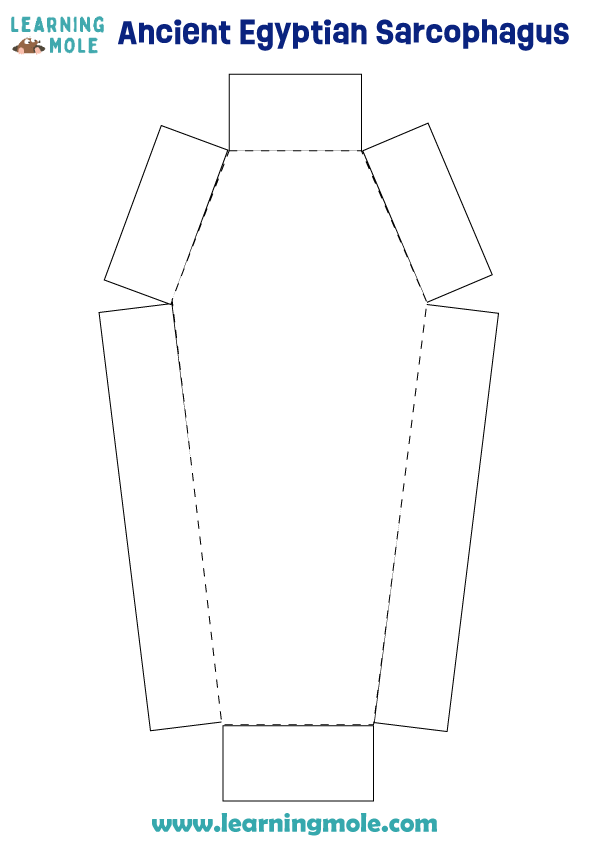
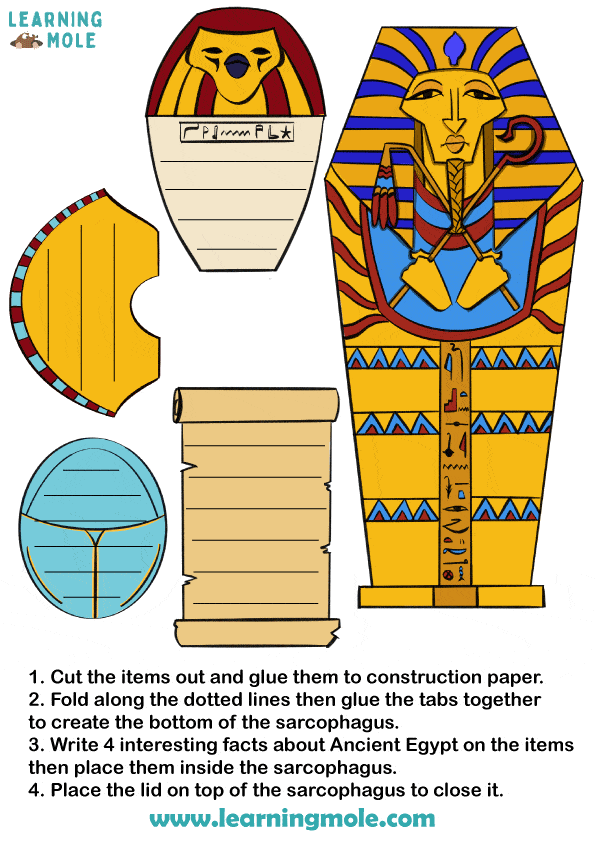
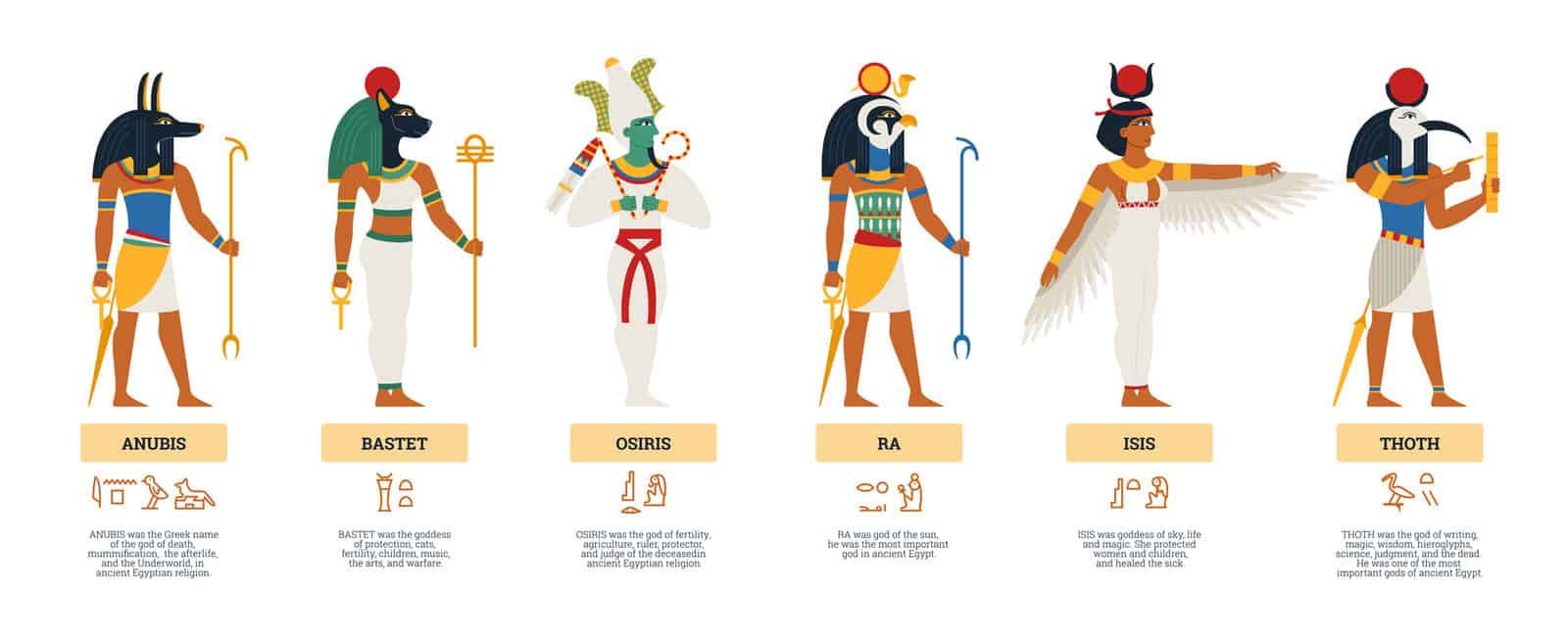
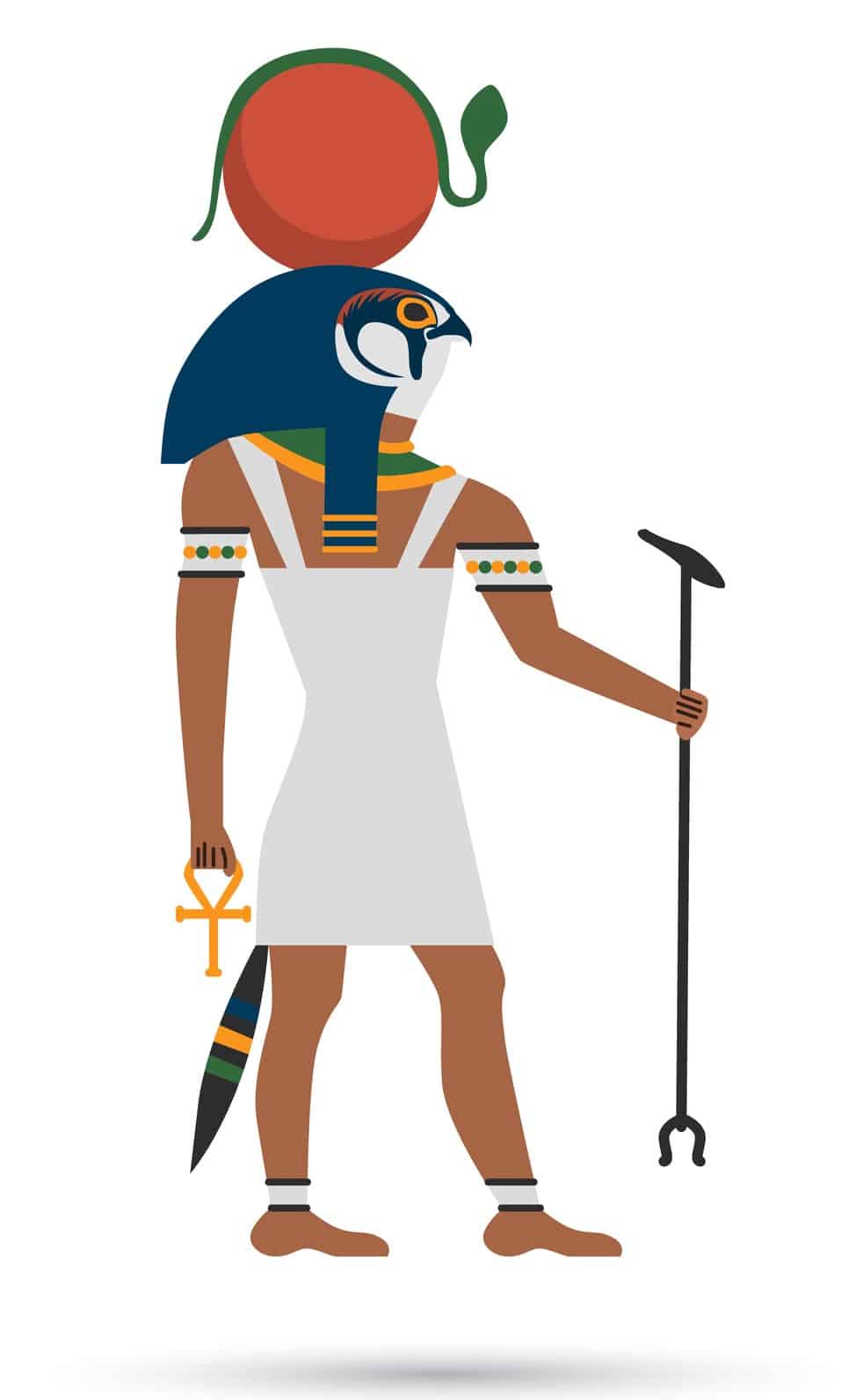
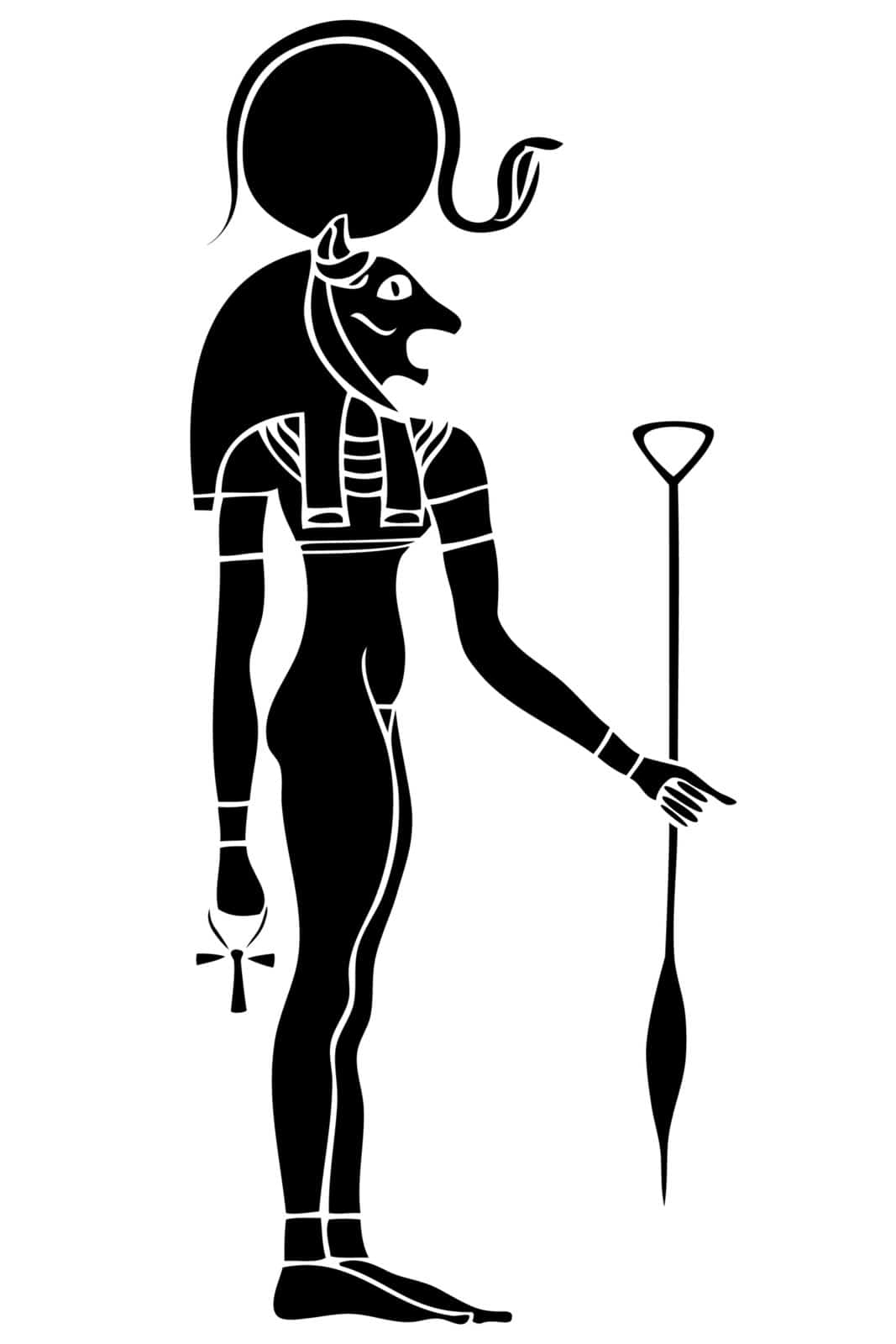
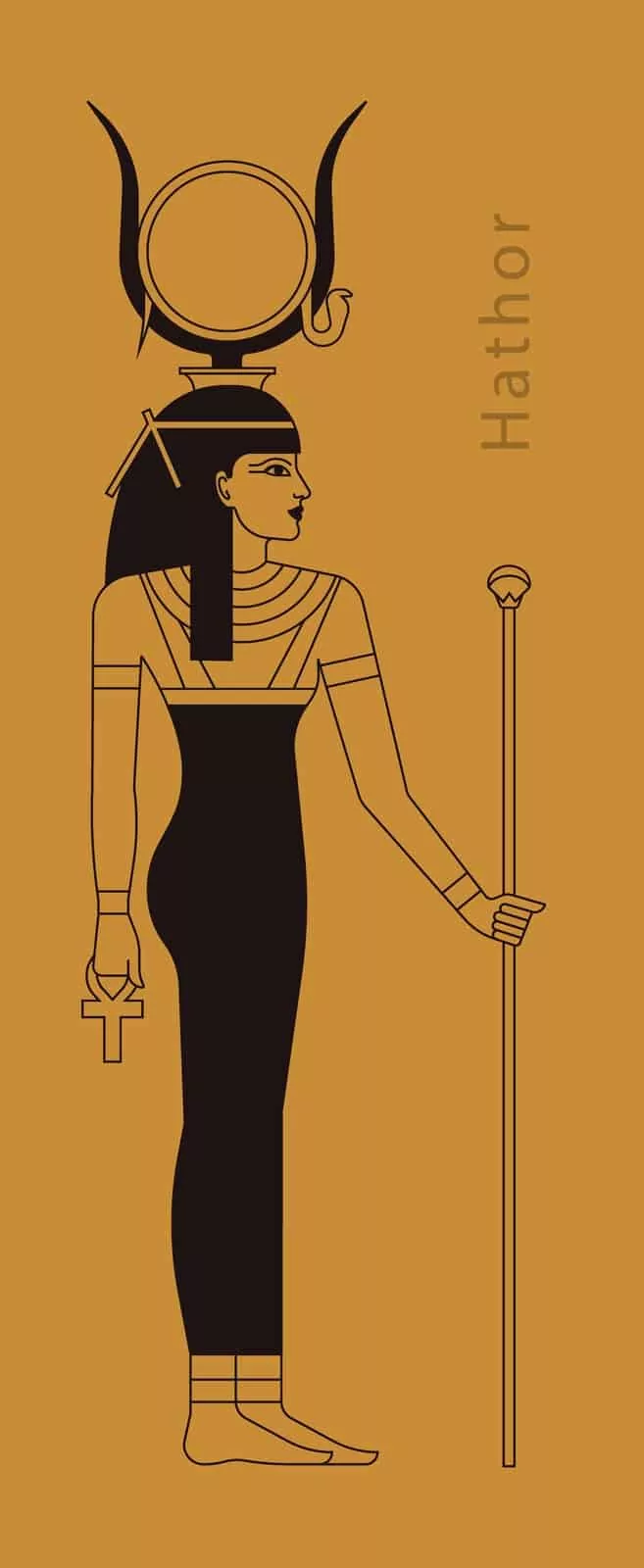
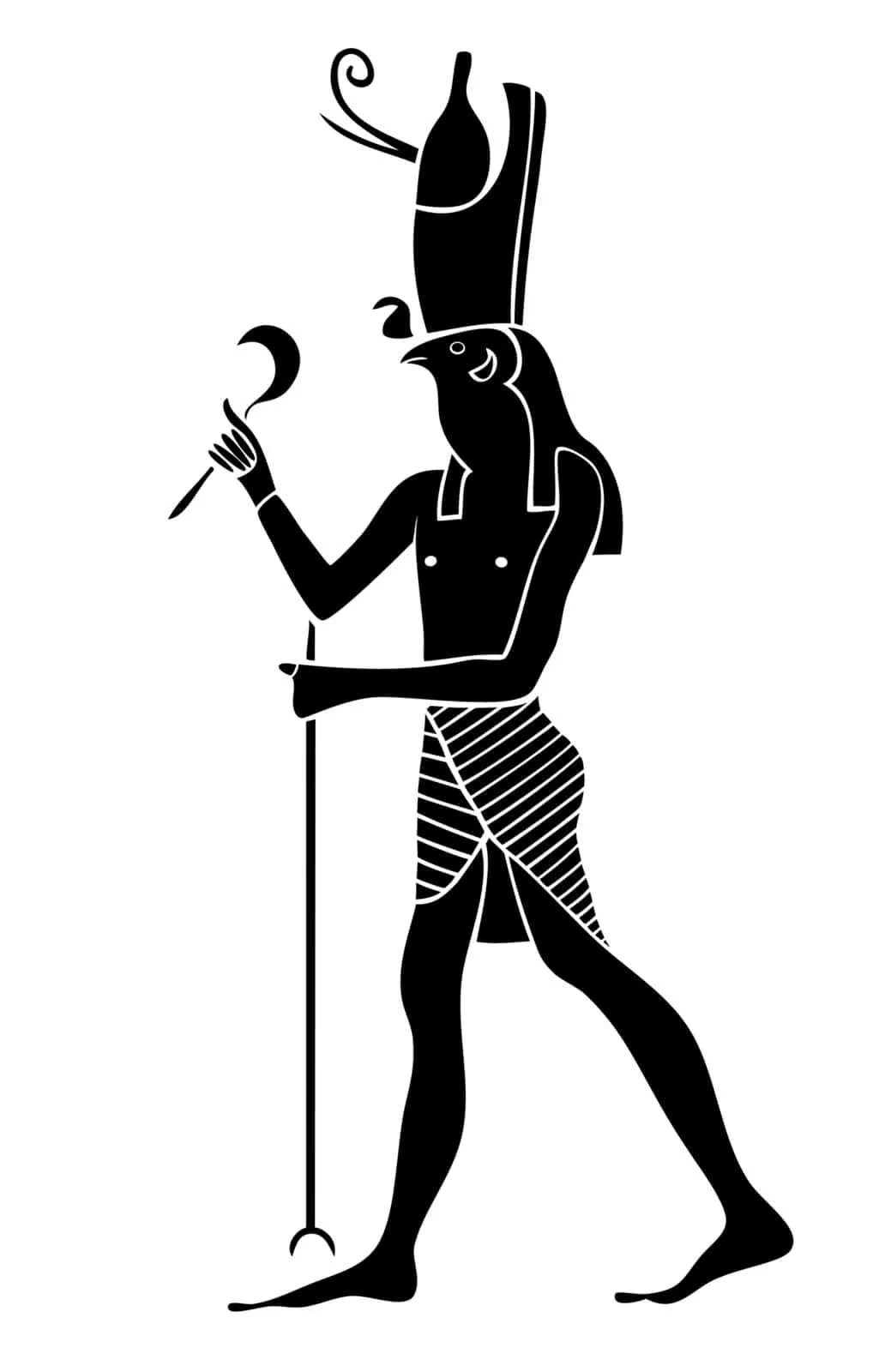
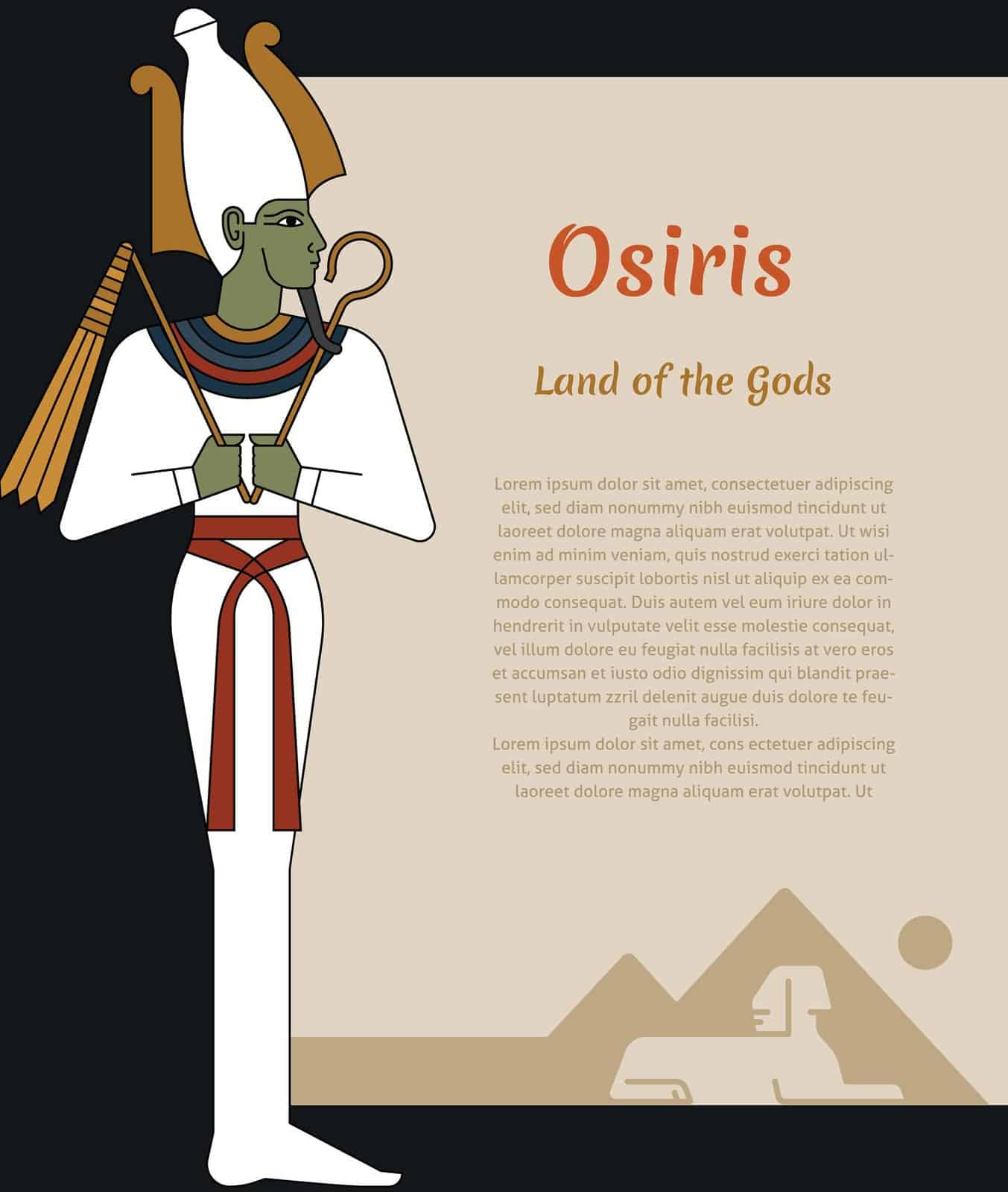



Leave a Reply